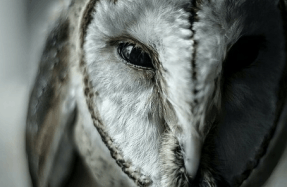Everything We Do Not Know
 Photo by the IAEA Imagebank via Flickr. Licensed under CC.
Photo by the IAEA Imagebank via Flickr. Licensed under CC. When a sixty-six-foot-long cement dock beached itself in a scenic cove north of Newport, Oregon, people climbed atop it, posed and took photos. The dock had floated 4,700 miles from the town of Misawa on northern Honshu, Japan’s main island. It was the second large piece of debris to cross the Pacific Ocean after the 9.0 Tōhoku earthquake struck Japan’s east coast on March 11, 2011, killing nearly 16,000 people and unleashing a tsunami that decimated towns and washed between four and eight million tons of debris into the Pacific. A splintered, foaming mess containing cars and cables, houses, lumber, and human beings surged as far as six miles inland before spilling into the sea. About 70 percent of the debris sank, but a year later, 1.5 million tons, what the Los Angeles Times said amounted to “roughly 100,000 garbage trucks’ worth,” were still floating on the open ocean. The first piece of tsunami debris to reach North America was a rusty Hokkaido shrimping ship named the Ryou-Un Maru, which the US Coast Guard blasted with cannon fire 180 miles off the Alaskan coast, and let sink 6,000 feet. This seven-foot-tall dock’s Styrofoam filling kept it afloat, and a metal plaque identified its origins. As Hirofumi Murabayashi of the Japanese Consulate in Portland told the news, “The owner of this dock is Aomori Prefecture, and they told us that they do not wish to have it returned.” Authorities sawed off a section to display in a tsunami awareness exhibit at Newport’s Hatfield Marine Science Visitor Center, and Oregon Governor John Kitzhaber created a hotline to report tsunami debris.
People on the Oregon coast are used to picking up trash. Everything from lighters and plastic bags to huge swollen logs wash ashore, but this trans-oceanic material was different. Debris hunters came to photograph and collect it. Some sold their finds on eBay. Tsunami treasure hunting became sport, and the town of Seaside, Oregon even used it to attract tourists. But coastal trash is neither fun nor attractive. It strangles birds, poisons fish and damages fisheries, and it can carry invasive species. After Fukushima, debris provided powerful evidence of decreasing oceanic health, and it served as an undeniable symbol of ecological connectivity. If the trash made it this far, people reasoned, what about the radiation?
The massive tsunami that pounded Japan’s Fukushima Daiichi nuclear complex in 2011 caused a triple meltdown, multiple reactor explosions, and released large but still unknown amounts of radioactive cesium-137, cesium-134, strontium-90, neptunium-237, uranium-236, plutonium-239 and -240, iodine-131 and -129, rutherium, tritium, and radium into the air, groundwater and ocean. The French Institute for Radiological Protection and Nuclear Safety’s report called the plant’s initial breakdown “the largest single contribution of radionuclides to the marine environment ever observed.” People named the radioactive material “the plume” and watched as it dispersed on various Pacific currents. With debris hitting the West Coast, the distance between Japan and the US no longer felt so vast.
As the California naturalist John Muir famously said, “When we try to pick out anything by itself, we find it hitched to everything else in the Universe.” Initially, Americans wanted to think of Fukushima as Japan’s problem. We were here and Japan was there. So we sent our condolences and donated to relief efforts and got back to watering our gardens and eating sushi─myself included. The question many scientists were asking on everyone’s behalf was whether Japan’s problem was poisoning the plankton that larger fish ate. If so, it would poison us.
Scientists didn’t initially know how the radiation was moving through the marine ecosystem, or what it would do to marine life over time, but a few, like oceanographer Ken Buesseler, immediately started studying it, and many activists and conspiratorial bloggers knew that they had to cut through the governmental rhetoric and Tokyo Electric Power Company cover-ups to find the truth. One truth was as clear as it had always been: everything is connected. If you thought you were safe, you were wrong.
Following the Daiichi nuclear meltdown, the Japanese government evacuated some 160,000 people from the contaminated area that officials deemed
You’re reading a preview, subscribe to read more.
Start your free 30 days





